12 High-Carb Foods You Might Want To Avoid
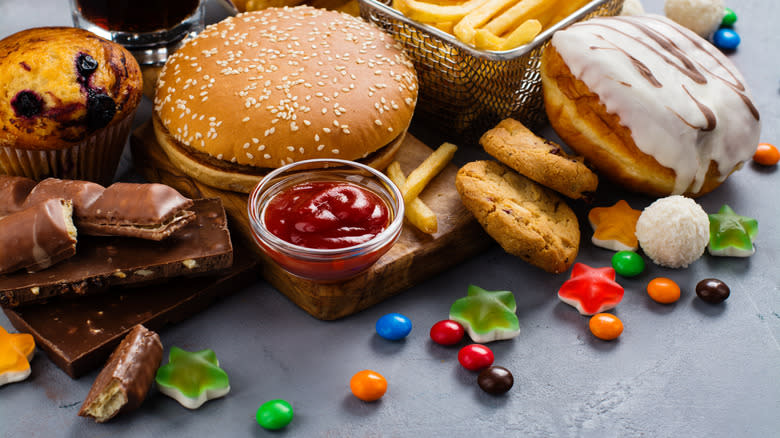
Carbohydrates, or simply carbs, in a nutshell, are our body's preferred source of fuel. They are made up of sugar molecules linked together in different ways. Some carbs are simple and easy to digest, such as glucose and fructose, while others are complex and take longer to break down, such as starch and fiber.
As our lifestyles have become increasingly sedentary and highly processed foods have become so accessible, carb consumption has escalated to unprecedented levels. The rise of the modern, carb-heavy diet is accompanied by a surge in health concerns, such as diabetes and heart disease, according to WebMD.
So, while carbs are an essential part of a healthy diet, what effect they will have on us will hugely depend on their quality (or source), quantity, and timing. To break it down, the soft, chewy white bread or your favorite can of sugary soda contains the worst kind of carbs -- the carbs you surely want to avoid. The following list of high-carb foods -- created from reputable medical and nutrition sources -- should be a good starting point in navigating the least healthy carbs out there, with handy tips on how to replace them.
Read more: 12 Vegetables And Fruits That Used To Look Very Different
Jams And Jellies
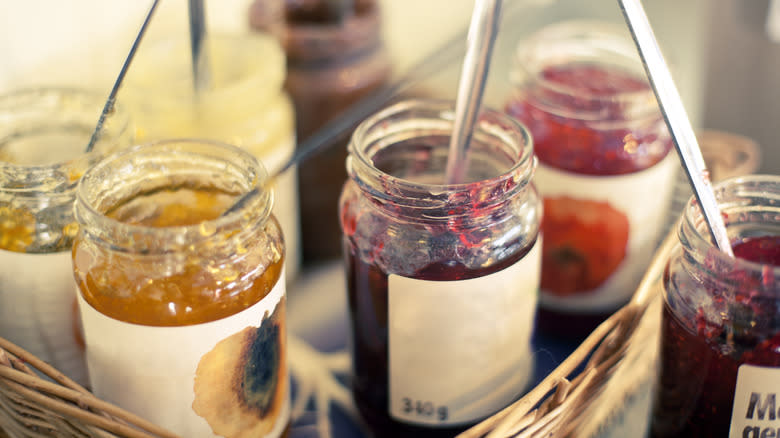
Jams and jellies may seem like a harmless companion for your morning toast, and it actually is -- in the short term. The carbs in these spreads offer a quick energy source, ideal for a breakfast pick-me-up. In terms of nutritional content, jams and jellies are remarkably similar. Both spreads are made of fruit and sugar and offer comparable macronutrients with nearly the same (48–54%) sugar content. According to Healthline, pectin-thickened jellies and jams have prebiotic effects and help overall gut health. That's a good bit.
But let's talk about the elephant in the room -- the sugar. A typical tablespoon of jam or jelly contains about 10 grams of sugar. That's almost half the recommended daily limit of added sugar for women (6 teaspoons) and more than a third for men (9 teaspoons). While sweetener is essential for gelling and as a preservative, the sheer amount of added sugar in some commercial products is concerning. To make things worse, some popular jams and jellies are not even sweetened with sugar but high fructose or corn syrup, which is a fast track to developing diabetes, according to Hartford Hospital.
Instead, choose the spreads with less added sugar or make your own jams with fresh (or frozen) fruits and a natural sweetener like honey. You can also use chia seeds to thicken the mixture, further increasing nutritional potency for a better start to your day.
Pastries

We've all been seduced by the buttery aroma and flakiness of the freshly baked pastry. But when it comes to health, pastries often find themselves on the wrong side of the table. Okay, maybe not the classic French croissant made with real butter, quality sugar, and flour. However, those Hostess Danishes with a white sugary glaze you can pick at Walmart are loaded with high fructose corn syrup, refined flour, and myriad artificial additives and preservatives. Calorie count can also be tricky. If you ever pick a box of Little Debbie Honey Buns, you will find it has 230 calories in a 50g pastry -- suffice to say that one is enough.
It shouldn't come as a surprise that highly processed pastries can spike your blood sugar, leading to cravings (per Diabetes Food Hub), mood swings, and energy crashes (via Novi Health). Consuming excess sugar and saturated fat regularly can pave the way to even more dire consequences: high blood pressure (via WebMD), high cholesterol (via WebMD), and heart disease (or stroke) may all be lurking around the corner (per NBC News).
Frankly, when you pick up a pastry, you shouldn't need to read through tedious ingredient lists just to find a familiar name. Simply eat the fresh pastries made on the day with as few processed ingredients as possible -- it tastes so much better anyway.
Canned Fruit
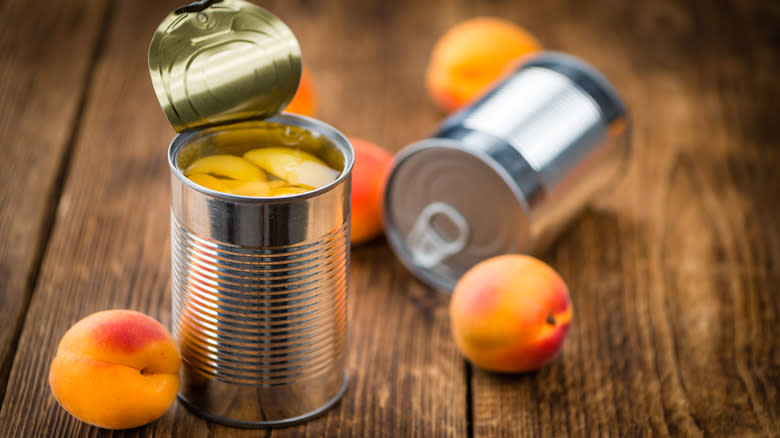
Canned fruit is an extremely convenient and seemingly healthy treat (fruit is supposed to be healthy, right?), but you should know that some canned fruits are packed with high-fructose corn syrup, which can send your blood sugar into a frenzy. Take the Del Monte canned fruit cocktail in heavy syrup; The sugar content is so steep that one serving (1/2 cup) of this sugary fix pretty much tops the recommended daily allowance for women (88%), while men have room for just a little more (58%).
Not all of it is bad. Canned fruit can be a healthy addition to your daily diet, particularly if you choose less sweet varieties like kiwi, strawberries, or peach in natural fruit juice. Canned fruit preserves most of its nutrients, with the exception of vitamins C and B, which are sensitive to heating. But be sure always to read the labels. And if you're looking for something more natural, consider frozen fruit. Frozen fruit is usually picked at peak ripeness and quickly frozen to preserve freshness and nutrition. It contains no added sugar or additives and can be stored in the freezer for those grey winter months when fresh fruit is scarce.
White Bread
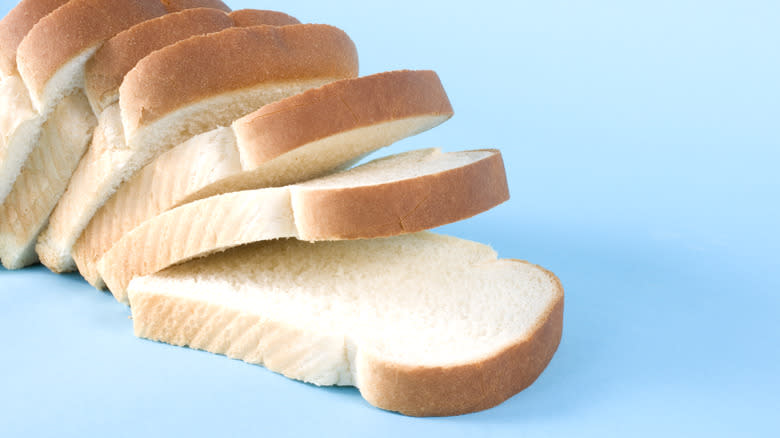
We've all grown up with that familiar sight of a loaf of white bread on our kitchen counters. The soft, fluffy texture and how it melts in the mouth is genuinely comforting. Sadly, the health benefits of spreading jam on a white toast are debatable. White bread is made with highly refined wheat flour, stripped of its bran and germ -- the parts that contain most of the fiber, vitamins, minerals, and antioxidants. The flour is often bleached with chemicals to make it whiter and softer.
Some white breads also contain added sugar, preservatives, and artificial flavors to improve their taste and shelf life. Consider this: a slice of average white bread packs 12 grams of carbohydrates but less than a gram of fiber, which doesn't bode well for your blood sugar levels. According to Medical News Today, high GI (glycemic index) foods like white bread can increase hunger and a greater risk of overeating.
When buying your bread, choose whole-grain or sourdough options. Whole-wheat bread, for instance, is higher in fiber and several vital nutrients, making it a health-friendly choice. Look for "whole" as the first ingredient on the label, such as whole wheat, whole rye, or whole oats, and choose bread with no added sugar or sweeteners.
Breakfast Cereal

Breakfast cereal boxes are often decorated with health claims. Words like "improved," "high in calcium," and "low-cholesterol" lure us into thinking we are making better choices. But here's the twist: these claims don't always tell the truth about the actual nutritional profile of the product. Research published in 2019 in the Journal of Public Policy & Marketing suggests almost zero correlation between these claims and the true nutritional benefits.
To make matters worse, high sugar content and refined grains are the culprits in many popular cereals. In fact, breakfast cereals are among the top sources of added sugar in the American diet, many containing more than 10 grams of added sugar per serving (40% of the recommended daily limit for women). Some of the worst examples are Post Oreo O's (16 grams per serving) and Kellogg's Krave (15 grams per serving).
Next time you're shopping for cereal, don't fall for the colorful packaging. Check the nutrition label instead. Home-baked granola is an even better alternative, but it may still fall short of the protein needed to sustain you longer. Milk, or yogurt, too, has little protein when compared to, say, eggs for breakfast. When combined with healthy fats like avocado and complex carbs like berries, eggs for breakfast seem like a more nutritionally complete option than cereal overall.
Candy

When it comes to treats that provide little to no nutritional value (outside of pleasure), candy must be one of the top contenders. It is mostly made of sugar, so it goes without saying it should be eaten in moderation. Of course, there are different types of candy out there, but generally speaking, the most popular candy bars, sweets, and gummies aren't that great health-wise.
Compared to tons of sugar-containing caramels, a candy bar may sometimes have an additional 13 grams of saturated fat (nearing the daily limit
of 20g for women), which can quickly add up when combined with other saturated fat sources in your diet. Depending on the type, one serving may also contain a significant number of calories. Some popular candy bars like Snickers or Kit Kat have anywhere around 230 to 250 calories per serving -- that's nearly three times more than a regular banana.
If you have a sweet tooth, choose your treats wisely. Look for candy that is made from natural or organic ingredients and does not contain HFCS (high fructose corn syrup), artificial sweeteners, or colors. Fresh fruits like berries and small quantities of dried fruits can provide a natural sweetness without the excessive calories and unhealthy fats found in candies. According to Healthline, dark chocolate, in moderation, can also be a heart-healthy choice that satisfies your craving.
Sugary Drinks
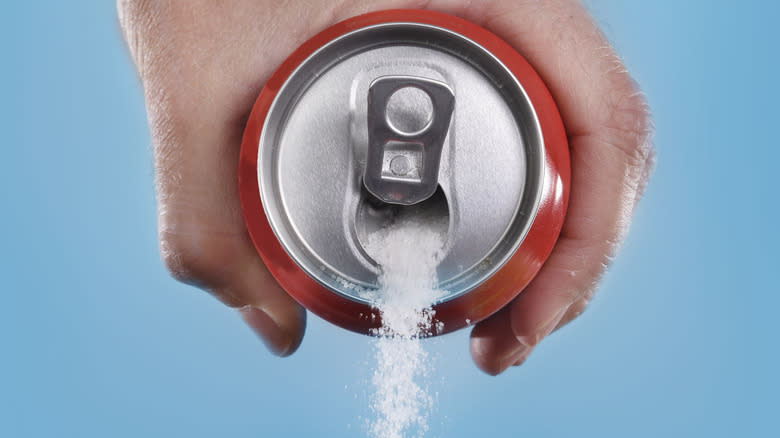
Sodas, fruit-flavored drinks, sports, and energy drinks are still ubiquitous despite being some of the worst carbs out there. They offer minimal to no nutritional benefits and are the leading source of added sugars in America. Their liquid form also has a sneaky advantage -- they bypass our body's defense against calorie overconsumption. As a result, they often replace healthier food options in our diet, only making the problem worse.
The amount of sugar in sugary drinks varies, depending on the serving size, but if you pick any of the top brands, it would be hard to find one without an excess. For instance, a 12-ounce can of Coca-Cola contains 39 grams of sugar, while a 16-ounce bottle of Monster Energy Drink a whopping 54 grams of sugar, surpassing all the recommendations.
If you're looking for a healthy alternative, the obvious choice is definitely water. But if you can't live with the fizz of the soda drinks, naturally flavored sparkling water is an ideal transition. As for "diet" sodas and low-calorie sweeteners, the data is a little confusing. While they provide a reduced-calorie alternative, the long-term health effects remain inconclusive.
White Rice
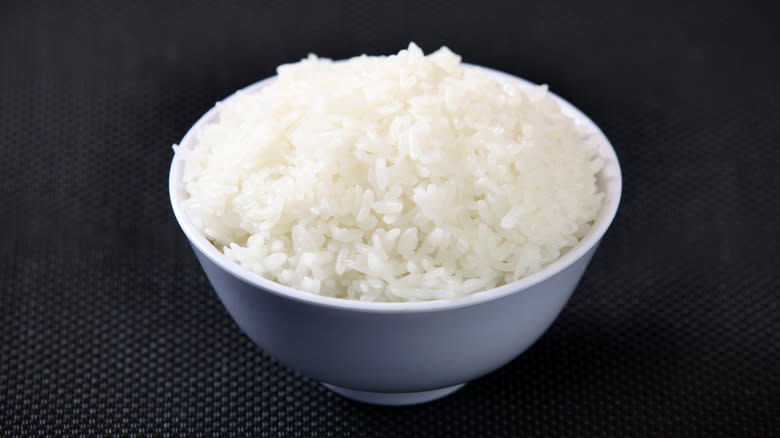
Refined carbohydrates are notorious for their negative impact on our health. They have been stripped of their nutrients and fiber, resulting in "empty" calories that can lead to serious health complications. White rice is a prime example of this (sadly). Compared to its whole-grain counterpart, white rice is notably deficient in fiber and micronutrients. The refining process removes the bran and germ, essential components of the rice kernel, leaving behind a product with little to no nutritional value.
Similar to eating white bread, refined grains can cause your blood sugar levels to spike rapidly. This effect can make you overeat and trigger cravings. So, while it's acceptable to include some white rice in your diet, eating a lot of it (or too often) may increase your risk of developing severe conditions, such as heart disease and type 2 diabetes, as per Healthline.
Instead of always reaching for a bowl of white rice, switch things up a bit and incorporate more nutritious options like brown rice, quinoa, greens, and legumes into your meals. These alternatives provide an abundance of fiber, vitamins, and minerals that can leave you feeling more satisfied and nourished for a longer.
Potato Crisps
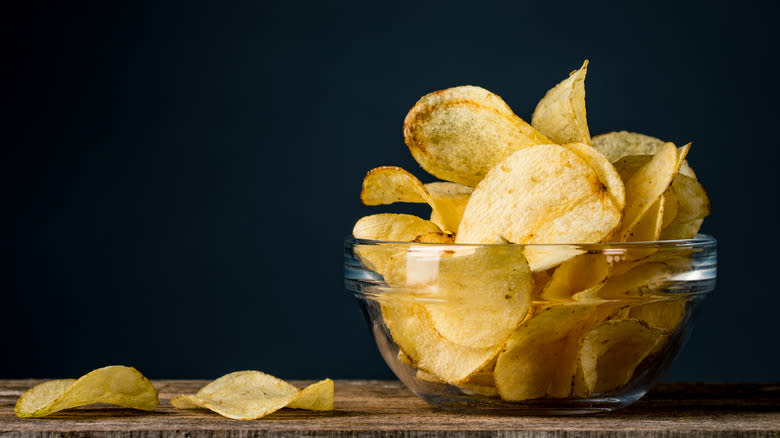
Potato crisps are deeply embedded in a snacking culture. They are satisfyingly crunchy, salty, and hard to resist, particularly when you see them staring right at you from the shelf. While potato crisps contain some complex vitamins like B5 and B6, as well as potassium, they are generally energy-dense with minimal nutritional value. In short, their nutritional profile does little to support a wholesome diet, potentially contributing to adverse health effects.
Chips are often salted excessively, making you crave more similar foods and ultimately creating a cycle that's hard to escape. To make things worse, a packet of some crisps contains around 20% to 25% of your daily recommended fat intake. Finally, the high-heat frying process can also generate harmful byproducts, like acrylamide. While long-term studies are scarce on the subject, Healthline suggests cutting crisps and fries to a minimum to limit the intake of this potentially dangerous neurotoxin.
Whenever you need something savory on the go, choose baked or air-fried chips instead of deep-fried ones. They have less fat and fewer calories. Or, better, explore alternatives like kale, apple, or bean chips, which offer a more nutrient-packed snacking experience. If you choose to indulge in potato chips, however, Livestrong recommends serving yourself a small portion while complementing your meal with nutrient-dense foods like whole grains, fruits, vegetables, and lean protein.
Ice Cream

When it comes to guilty pleasures, few things beat the chilly soft ice cream. It's definitely a universal favorite, but the sugar-laden, calorie-packed, and sometimes artificial nature of this frozen treat tells a less appealing story. Whenever you feel like scooping some, be mindful of the fact that ice cream is fat (a lot of it is saturated) and calorie-heavy but nutrient-light, potentially crowding out more nutrient-dense foods from your diet.
Ice cream's nutritional profile can vary widely depending on the type, but it usually contains anywhere between 14 to an insane 39 grams of added sugar per serving, pushing you very close to your daily sugar limit -- or nearly doubling it if you're a woman. You will also find that some less premium ice creams are sweetened with high fructose corn syrup instead of regular sugar -- watch out for those.
Making your own ice cream with high-quality ingredients is an excellent alternative. You can create a dairy-free frozen banana-based ice cream with lovely creaminess. For a heart-healthy option, Harvard Health recommends trying avocado-based ice cream. However, frozen yogurt is not always a healthy choice, especially if it has sweet toppings, as it can be high in sugar.
Protein Bars
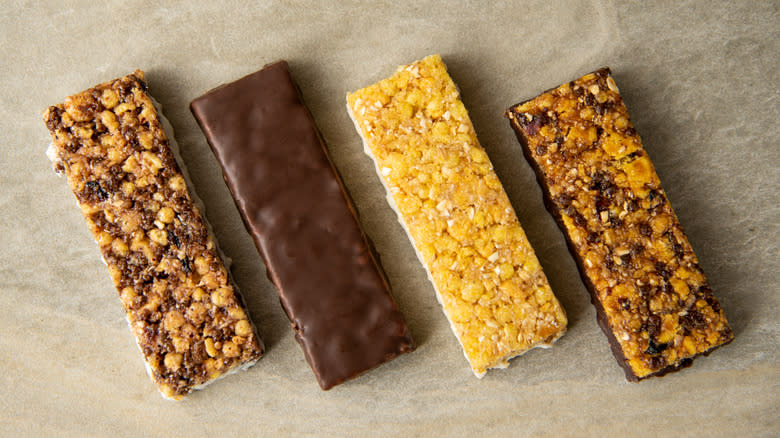
Protein bars have become a go-to source of nutrition for anyone living a fast-paced life. They offer a convenient way to supplement the diet while on the move. But with so many brands and varieties available in the market, it's getting harder to differentiate between the ones made with natural ingredients like fruit, nuts, and whole grains and the more processed ones that use less compelling sweeteners like high fructose corn syrup.
It's not just the corn syrup that's worrisome, however. Protein bars often contain artificial sweeteners such as sucralose, aspartame, or acesulfame potassium. Per ABC News, consuming these sweeteners can negatively affect your gut microbiome and blood sugar regulation. On the other end, you'll find the low-sugar bars sweetened with sugar alcohols like maltitol or sorbitol, which, according to Healthline, can cause digestive issues, such as bloating, gas, and diarrhea.
If you read the labels carefully, protein bars can be a handy supplement for protein, vitamin, and mineral intake, but they can never replace a whole, nutritious meal, according to Healthline. Always look for labels that are easy to understand and recognize the ingredients listed. Anthony DiMarino, a dietician for Cleveland Clinic, told the New York Times that high-quality protein snack should contain no more than 200 calories, minimal fat, added sugar (ideally no more than 5 grams), and a minimum of 15 to 20 grams of protein per serving.
Fruit Snacks
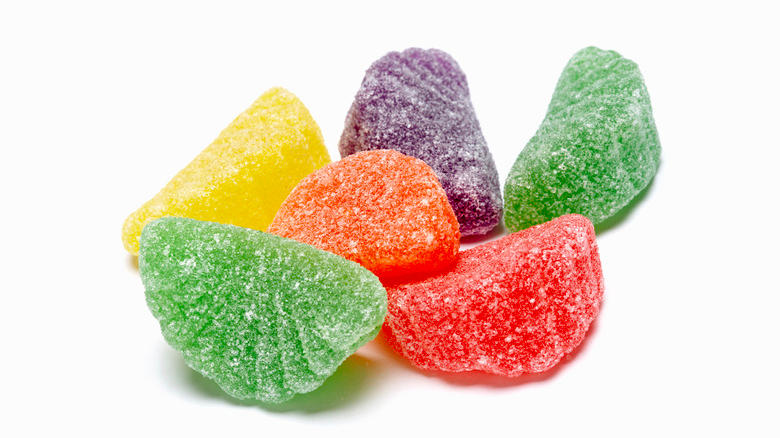
When it comes to fruit snacks, they can seem like a great alternative to candy, but they are often loaded with sugar and artificial ingredients. While they are marketed as a convenient and fun way to get fruit in your diet, they are far from the real thing. In fact, a quick glance at the label of a popular fruit snack like Welch's will reveal that "fruit puree" is just a tiny part of the ingredients list. It's followed by corn syrup, modified corn starch, and added colors, which fill up the rest of the list.
Processed fruit snacks are often high in sugar, which can cause spikes in your blood glucose levels. A 30g serving of fruit snacks can contain as much as 13 grams of sugar -- more than half the recommended daily limit for added sugars for children. Fruit snacks are also low in fiber, which you would get from eating whole fruit.
Dried fruits like mangoes and apricots may seem like a healthier alternative, but when these fruits are dried, the sugar becomes more concentrated, and they are more likely to coat your teeth, making them as harmful as candy. The best is to avoid these seemingly healthy snacks and simply opt for a serving of fresh fruit or consider snacks with no added sugars or artificial ingredients.
Read the original article on Daily Meal.

